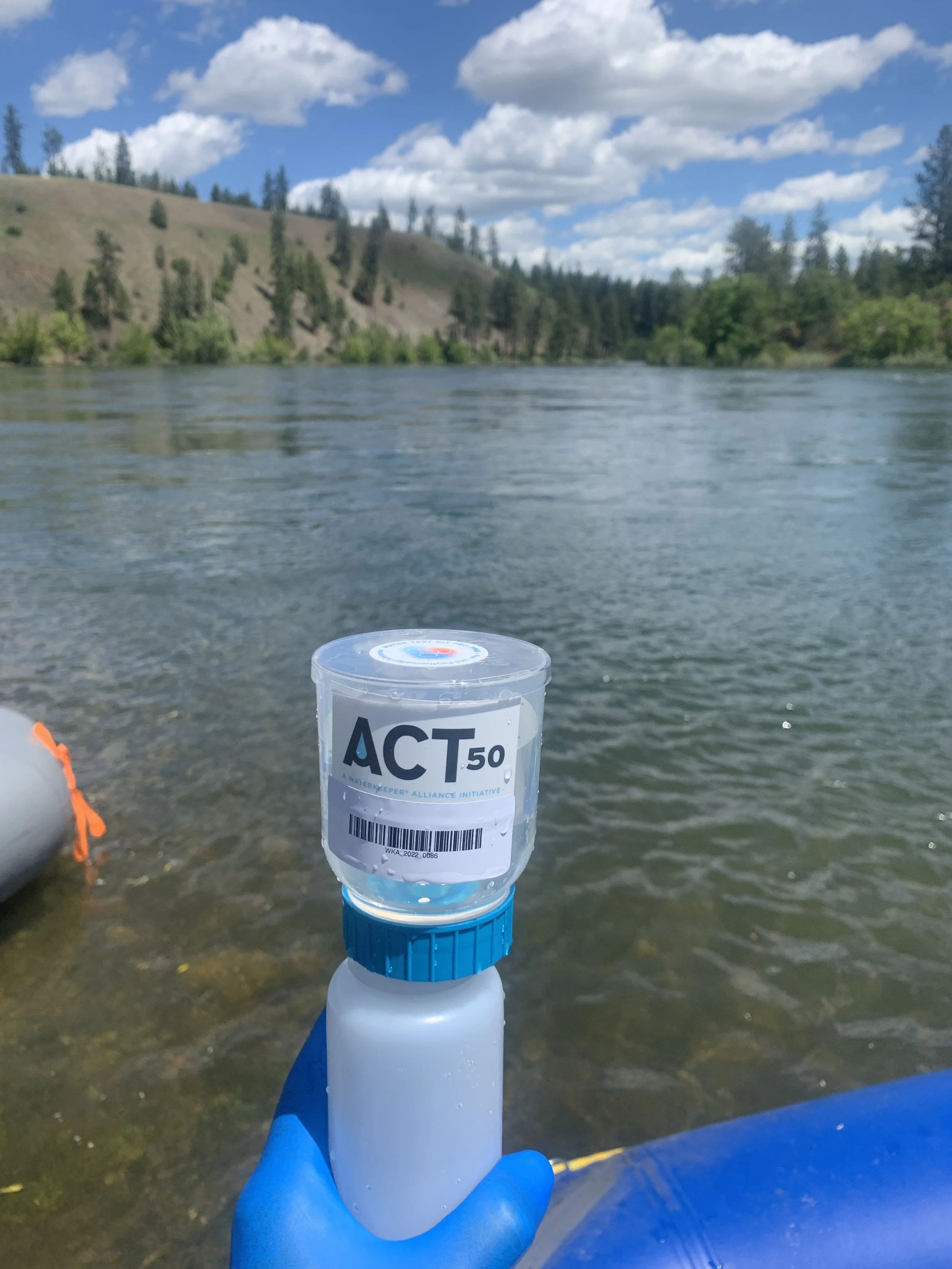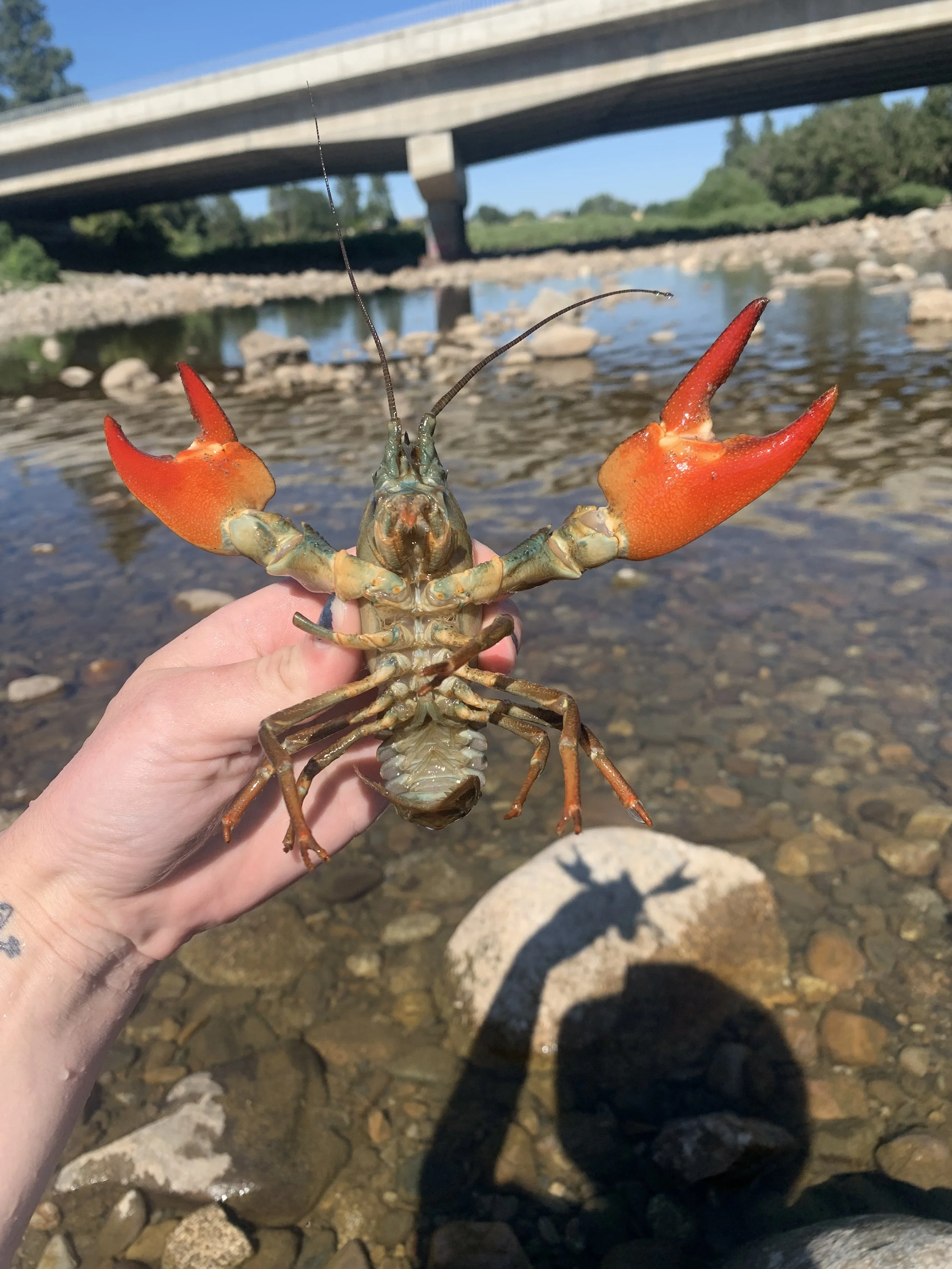Dear Mr. Johnson, SUBJECT: Comments on EPA’s Spokane and Little Spokane River PCB TMDL development We at the Spokane Riverkeeper and co-signers have appreciated the opportunity to participate in the PCB TMDL process and, specifically, to attend your quarterly public webinars which provide on EPA’s PCB TMDLs for Spokane River and Little Spokane River, held in March and June of 2023. Based on our observations and participation in these workshops, we wish to offer this comment letter before the next quarterly workshop (28 September of this year), in order to maximize our opportunity for input to this important process. Based on these observations, we wish to offer several constructive comments and suggestions. The comments we are offering fall into two general categories, which are (1) the technical approach input data to the TMDL modeling process, and (2) the implementation planning phase of the project. We think it is important to bring these issues to your attention during the TMDL development process rather than solely providing comments “after the fact” on the draft PCB TMDL to be issued next year.
The Spokane Riverkeeper, in partnership with the University of Idaho, held 4 crayfish collection events between July 1st to September 1st. Three of these events were with the general public while one event was with the Salish School. Out of the 4 events, we had 86 volunteers who helped catch 210 individual crayfish. The Salish School alone had 14 volunteers who managed to catch 100 crayfish in about 3 hours.
Read the 2022 Annual Report from the Department of Ecology on progress under the Riverkeeper Settlement Agreement. The report documents their efforts to improve water quality in the Hangman Creek Basin. These efforts were precipitated by a settlement with the Spokane Riverkeeper, who challenged the EPA in court to improve the State plan to address surface water pollution in the basin. These efforts include incentive programs as well as enforcement. To date, 76 sites have been prioritized to address pollution issues.
Construction of the new stormwater ponds make take out at Downriver Park dangerous due to active construction equipment. However, floating the Spokane River from Peaceful Valley to TJ Meenach bridge is still possible.
Spokane Riverkeeper, Jerry White, Jr. is announcing that he plans to step aside as Executive Director of the organization. By 2024, the Spokane Riverkeeper plans to have a new Executive Director in place. The organization will seek a new Riverkeeper this summer.
The Spokane Riverkeeper has resolved a Clean Water Act lawsuit against CHS Inc. Primeland in Rockford WA, for excessive stormwater pollution released from the facility. The lawsuit was filed in 2021 for violations of the permit that regulates the discharge of stormwater into Rock Creek, a tributary of Hangman Creek. The excessive pollution was primarily turbid runoff from the grounds and roofs of the facilities that then drained into Rock Creek. High levels of zinc, which is toxic to aquatic ecosystems, has also been found in the facility runoff. This pollution is regulated by the State of Washington and monitored by CHS Inc. In excessive amounts, pollution from the facility, can contribute to excessive suspended sediments, toxic metals, and suspended dirt in both Rock and Hangman Creeks.
Earth Day is a time to reflect on our connection with the natural world. In Spokane, we live with the Spokane River. As the Riverkeeper, I offer this reflection in 2023.
Photo Courtesy of Tim Connor
The results are in from our collaborative Crayfish Study and Spokane River Crayfish have the lowest mercury concentrations in the region!
On a November float trip, Spokane Riverkeepers spied a fall Chinook salmon who died at the end of her life cycle. She expired after giving her all to the River, the ecosystem and the human communities. She passed on after spawning in the Spokane River, a totally natural and beautiful process.
She was an adult who had come back to the upper Columbia River looking for suitable spawning habitat. She was released in September with over 150 peers, just above the confluence of the Hangman Creek/Spokane River by the Spokane Tribe in concert with the Coeur d'Alene Tribe. All five of the Upper Columbia Plateau Tribes have worked on this ultimate vision. This was a ceremonious Tribal release that marks the first time adult, Chinook salmon have been back to the Spokane River over 110 years. The construction of hydroelectric dams blocked their great migrations and contributions long ago. This salmon release is a part of a phased plan by the Tribes of the Upper Columbia Plateau to return this keystone species to the watershed. Columbia Plateau Tribes are leading the way in the visions and actions that stand to heal water, heal communities, and benefit all residents of the Inland Northwest. The Columbia River could be boasted to have once had the greatest migrations in the animal kingdom. On a par with the American Bison or those wildebeests in Africa. Over 16,000,000 salmon once returned annually to the Columbia Basin. They migrated clear into Canada and as far as Nevada. 40% of their habitat was above the Grand Coulee Dam in the upper Columbia Basin, tragically blocked in 1942.
The Spokane Riverkeeper partnered with Spokane Falls Trout Unlimited and local community scientists for the fifth year to measure and determine the effect of Hangman Creek’s annual sediment plume on water clarity (turbidity) in the Spokane River.
The EPA recently promulgated a strong and protective Water Quality Standard (WQS) for toxic PCB pollution.
A Water Quality Standard is a standard by which we measure whether water is legally polluted or not. In Washington the has been a long-running battle over the WQS for toxic chemicals called PCBs.
Get involved and learn more about protecting the Spokane River!
Thanks to the help of local community scientists, we've taken the next step towards proving that Hangman Creek pollutes the Spokane River with sediment. We are ecstatic to announce that we've completed a major milestone in our "Community Science Sediment Study".
First-of-its kind study by Waterkeeper Alliance found 83% of the waters tested across the country were contaminated by dangerous PFAS chemicals. The Spokane River was also found to have PFAS pollution below Spokane’s Wastewater discharge plant
The latest progress report of restoration and pollution remediation work in the Hangman Creek watershed is hot of the presses. It highlights continued progress towards a healthy watershed and clean water. Much of the work in this report was performed due to an innovative lawsuit brought against the EPA by the Spokane Riverkeeper.
The Spokane Riverkeeper has partnered with the University of Idaho Water Resources Research Institute to collect crayfish in the Spokane River to be tested for mercury levels. Mercury is pervasive in our environment and the Spokane River, along with other pollutants such as PCBs. This summer of 2022 was the second year of this study; these data will be contributed to studies throughout the Columbia Basin and used to assess crayfish and river health. Previous results show low levels of mercury in our local crayfish, although less is known about heavy metal and other toxics.
In May of this year, we helped pass a landmark Spokane Ordinance (C36209) that aims to address declining river flows by stopping the overconsumption of aquifer water. Spokane can keep more water in our River in the low-flow seasons and be much smarter by reducing the aquifer water it uses in outdoor irrigation and keeping that water in the Spokane River. The Ordinance was visionary n that it listens to River flows and determines when we need to begin reducing our aquifer footprint and address the peak demand in our city which is primarily outdoor irrigation.
Hey neighbor. I'm talking to you! Don't get me wrong, I love my neighbors and appreciate the immediate community we share together. But there are few things in life that irk me. And one of those things is wasting water. As Spokane County (including Kootenai, Bonner and Stevens Counties) continue to grow, so does the demand for cold, clean water. Not just for human consumption and irrigation but also for our native redband trout and future salmon. Water is essential to survival. Without water, we're done and dusted. We will NOT survive.
This summer, we here at the Spokane Riverkeeper have undertaken a “River Journey”. Simple enough in name, it offers endless implications for the meaning and relevance to us as people, as advocates, as a community, and as an organization. The Journey is a descent down the Spokane River and it has been designed to communicate several things to folks who watch the River and care deeply about its future.




















